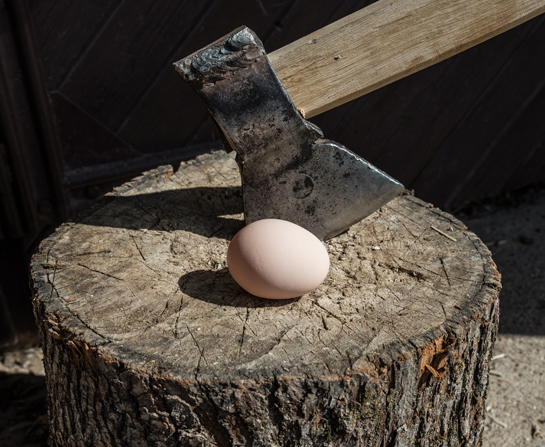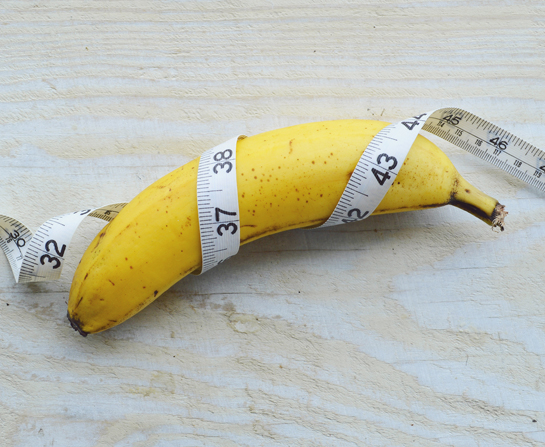Not every man is circumcised as a child. However, sometimes there are circumstances that require a man to get the foreskin removed when he is older. We catch up with consultant urologist Professor Dr Christopher Ho Chee Kong on the types of medical conditions that may require the circumcision, as well as the range of options available.
WORDS LIM TECK CHOON
 FEATURED EXPERT FEATURED EXPERTPROFESSOR DR CHRISTOPHER HO CHEE KONG Consultant Urologist School of Medicine Taylor’s University |
COMMON MEDICAL REASONS FOR CIRCUMCISION
Professor Dr Christopher Ho shares that there are various medical conditions that may necessitate a circumcision. Here are some of the more common ones.
Phimosis
- The foreskin is so tight that it can’t be retracted back past the glans or head of the penis.
- More common in babies and toddlers but may develop in older males due to scarring of the penile skin.
Paraphimosis
- When the foreskin is retracted, it can’t return to its original position.
- This causes the head or glans of the penis to become swollen and even painful.
Recurrent Balanitis
- Balanitis is the infection of the glans.
- It’s treatable, but men with foreskin that experience recurrent balanitis can opt to have the foreskin removed and reduce the chances of further recurrence.
| To learn more about balanitis, click here for more information from Professor Dr Chris Ho. |
Posthitis
- This describes the inflammation of the foreskin.
- If the man is unlucky, he may experience this and balanitis at the same time!
Other Reasons
- Warts
- Foreskin tumour or cancer
- Foreskin injury, as due those related to zipper accidents
ADULT CIRCUMCISION: WHAT ARE THE OPTIONS?
“There are many types of circumcision and modifications throughout the years,” says Professor Dr Christopher Ho. He further explains that there are generally 3 types of options.
Option 1: General Surgery
Dorsal Slit Technique
- The most common circumcision technique in Malaysia.
- The foreskin is pulled over to cover the glans.
- The surgeon then makes a snip along the upper or dorsal surface of the skin, followed by a cut along the circumference to remove excess skin.
- The remaining raw edges of the foreskin will then be sutured together to stop the bleeding. These sutures will eventually fall off after a month or so.
Sleeve Technique
- This technique is more popular in Western countries.
- The surgeon will make 2 incisions along the circumference of the penile skin are made onto the penile skin.
- The first incision is usually around the middle of the penis, while the second is made after the foreskin is pulled back.
- The surgeon that then makes a dorsal cut in the midline to connect these 2 incisions. This allows the surgeon to remove the skin between these 2 incisions.
- The surgeon will then suture the remaining edges of the foreskin.
- This technique is a bit more difficult to perform compared to the dorsal slit technique, but it’s also considered — in theory, anyway — the safer technique, as there is less risk of injury to the glans.
Option 2: Surgery with Specific Equipment
Gomco Clamp Technique
- A bell-shaped device will be fitted over the glans and under the foreskin. The surgeon may need to make a small incision in the foreskin to accommodate this device.
- The foreskin is pulled up and over the bell. The clamp is then tightened, reducing blood flow to the area designated for circumcision.
- The clamp will then be left in place for 5 minutes to stop any bleeding.
- The surgeon will then remove the foreskin.
- This is a typically quick and easy surgical procedure with little bleeding. However, the instruments used need to be properly sterilized in order to minimize the risk of infection.
Mogen Clamp Technique
- This method is commonly used in the Jewish community for the circumcision of their babies. In fact, ‘Mogen’ is the Hebrew word for ‘shield’.
- The foreskin will be pulled through the narrow opening of a flat metal device. Once the foreskin is fully pulled through, it will be clamped and locked.
- The surgeon will then pull the foreskin pulled through above the clamp and remove it. If this technique is performed on babies, there is no need for sutures.
- This is a quick and almost bloodless technique. However, proper sterilization of the Mogen clamp is necessary to prevent infection.
- Also, this technique carries with it a risk of injury to the glans.
Option 3: Plastic Rings
Shang Ring Technique
- This technique, which originated from China, employs the use of a pair of inner and outer rings that can be clamped together.
- The inner ring is placed on the outside of the foreskin. The redundant foreskin is then turned inside out and pulled over the inner ring.
- The outer ring is placed over the inner ring.
- Both rings are clamped, sandwiching the redundant foreskin between them.
- The surgeon then removes the redundant foreskin.
- The rings will be removed after 7 to 10 days.
- The Shan Ring method is quite popular, as it can be performed easily in a clinic and offers minimal bleeding and quick recovery.
- However, some men may find having the Shang Ring hanging on to their penis for the 7 to 10 days a cumbersome bother.
- Furthermore, the rings need to be carefully and properly applied for best results and to avoid complications such as oedema, bleeding, and infection.
Plastibell Technique
- The Plastibell is a small plastic bell with a rim on the open side.
- The device is placed under the foreskin and over the glans. A piece of suture is then tied directly around the foreskin, cutting off the blood supply to it.
- The surgeon then removes off the extra foreskin.
- The plastic ring is left on after the circumcision; it will fall off on its own about 6 to 12 days later.
- This technique protects the glans from injury during the circumcision.
- However, it carries a risk of a significant complication, as the glans can swell and protrude or herniate through the ring. This can lead to more severe swelling, reduced blood and urine flow, and subsequent life-long complications or sequelae.
- This complication is not immediate; it may occur hours or even days after the procedure, and by that time, the patient would have left the clinic and early signs of this complication may be overlooked as a result.
| If the details of these options seem overwhelming and even daunting, Professor Dr Christopher Ho assures us that the urologist—that’s healthcare professional that typically performs adult circumcision—will always discuss available options and help us determine which one is the right one for us. |
| This article is part of our series on tips and advice on men’s health, sex life, and fertility. |








